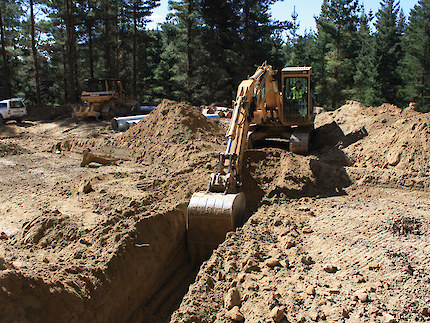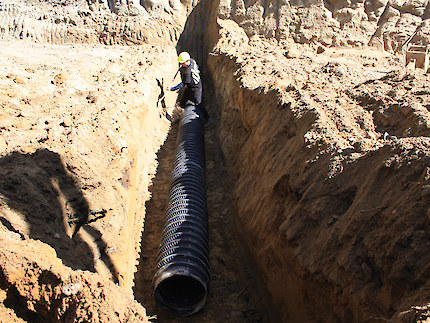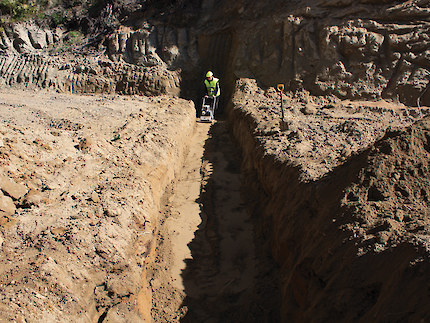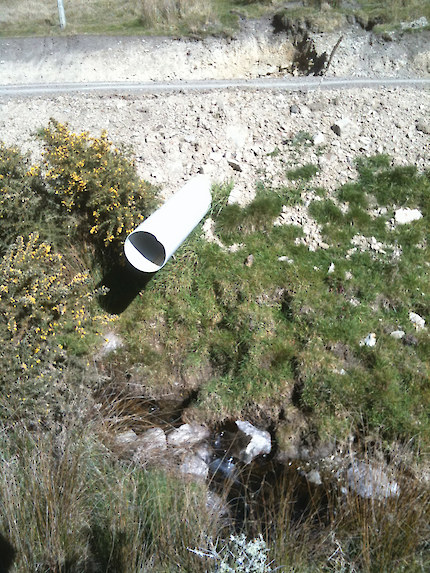Road drainage culverts (cross road culverts) are essential for draining water across a road. They often have sediment traps at their inlet, and could also have other sediment controls at the outlet like flumes, rock, slash or sediment traps. Note regulations apply when people are working in a trench deeper than 1.5 m, and deeper than it is wide at the top.
How do you space, locate and size a culvert?
Table 11: Recommended maximum culvert spacing (metres) for non-ridge top roading

Step 1: Use the table above for approximate spacing
- Identify the soil risk for the steepness of the road section. Steeper roads on highly erodible soils need closely spaced culverts
Table 12: Site factors which may affect culvert location, spacing and size

Step 2: Consider other site factors which may affect location, spacing and size
Look around the road and factor in these considerations. Ideally, locate outlets:
- On solid ground, where possible
- Away from large fills unless flumed
- Where trucks or logging equipment will not damage them
Table 13: Sizing the culvert

Step 3: Sizing the culvert
- The NES-PF regulations require installing minimum sized drainage culverts
- Oversize or add more if other factors identified in Step 2 show increased risk

- The solid bund at the culvert entrance helps ensure that water does not bypass the culvert
- The culvert mouth is easy to clean with an excavator
- The culvert has a marker peg and is GPS located

- The culvert inlet is easily blocked
- The culvert is hard to keep clean
- The culvert will be bypassed in heavy rain. This will damage the road and cause erosion

1
- Install during road construction, not after metalling
- Set at a minimum of 20 degrees across the road and downslope to reduce blockage

2
- A good culvert inlet was constructed
- The inlet can be cleaned easily with an excavator bucket without damaging the culvert mouth

3
- The culvert has sufficient fall so water drains from the pipe and doesn’t block easily
- The culvert bed was compacted
- Pipe sections are joined in the trench
- No sharp rocks or objects are in the backfill
- Care is taken to compact soil around the pipe

4
- The ground around the pipe was compacted
- The trench is flat and to a depth recommended by the manufacturer

- The culvert outlet is armoured by rock to reduce sedimentation

- Two non-marked culverts in a row were destroyed
- The culverts were not marked, so damage was more likely
- Water has bypassed the culverts and heavily scoured the road

- The culvert should not drain straight into the stream if there is no sediment control above the inlet
- The road should not be built so close to the stream, unless there are no other feasible alternatives
- Roads close to streams require council approval